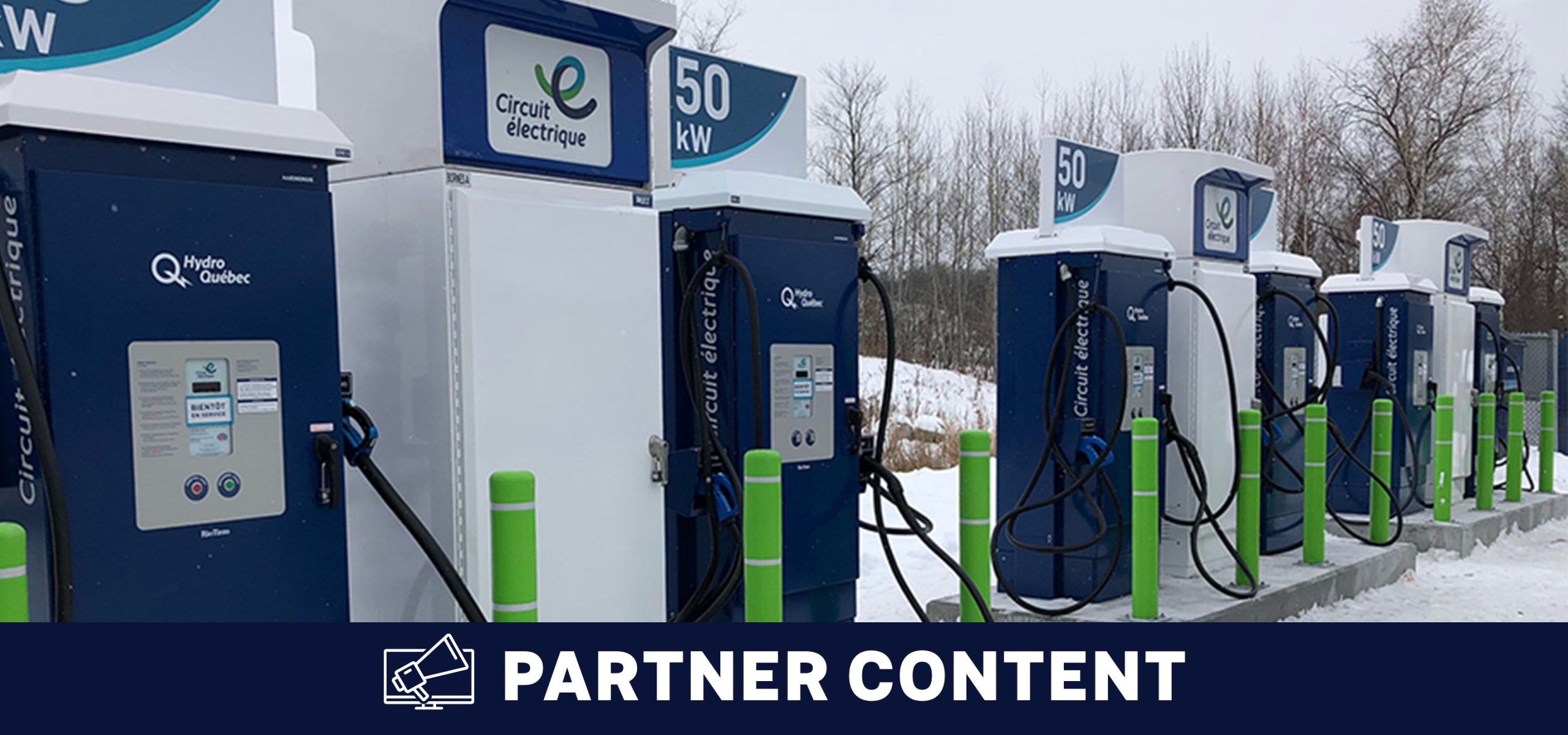Battery charge time: Optimize EV charging by understanding your vehicle

Electric vehicle charging is now more accessible than ever. With the arrival of winter and its cold temperatures, many EV drivers are wondering how quickly they can charge their vehicles at fast-charge stations.
A vehicle’s charging time is one of the determining factors involved in the decision to purchase an EV. However, charging can be affected by cold temperatures, even at a fast-charge station! To optimize their winter charging experience, EV drivers need to understand what affects their car’s charging time.
There are two key factors that affect the time it takes to charge an EV: the charging station power and the battery’s features. The Electric Circuit offers three power levels: 25 kW, 50 kW and 100 kW. These levels correspond to the maximum charge that fast-charge stations can provide. For instance, an EV connected to a 50-kW charging station can charge at a maximum of 50 kW.
The vehicle’s Battery Management System (BMS) communicates with the charging station and adapts the charging power based on the battery’s features. It is therefore the vehicle that determines the charging power that the charging station will provide in order to ensure that the battery is protected and its service life is optimized.
There are two things to consider with regard to a battery’s features—the battery charge level and its temperature. First, the higher the battery charge, the slower the charging speed. This occurs gradually or in increments during the charging session. A vehicle’s maximum charging speed is maintained for a certain amount of time, which varies based on the analysis carried out by the BMS when the charge begins. The speed then decreases quickly to protect the battery. Generally, once the battery has been charged to 80%, the charging power requested by the vehicle decreases sharply, making it less appealing to continue the charging session. Indeed, why pay for a fast charge once the charging speed has begun to decrease?
As for the battery temperature, ideally, it should be between 20°C and 25°C. Otherwise, the vehicle will ask the fast-charge station to limit the charging power. As a result, the average power provided by the charging station will be below its maximum level. It also explains why the charging power is reduced on the hottest days of summer and the coldest days of winter. In cold weather, EV drivers should try to arrive at a fast-charge station when the vehicle battery has already had time to warm up.
Charging tips
Follow these three tips to increase the efficiency of a winter charging session at a fast-charge station:
- Connect to the charging station when the battery charge level is low—ideally below 30%.
- If possible, store the vehicle in a garage to keep the battery warm.
- Opt for fast charging after a long trip because the battery will have had time to warm up during the trip.
What about ultra-fast charging stations?
Currently, the Electric Circuit’s 50-kW fast-charge stations meet the needs of most electric vehicles on Québec’s roads. However, with the arrival of new models on the market, the Electric Circuit needs to diversify its charging services to adapt to the technological changes and meet demand while continuing to serve every region of the province.
To do so, the Electric Circuit deployed 153 new fast-charge stations of different levels (25 kW, 50 kW and 100 kW) in 2020 in several regions of Québec. It also began testing the new technologies using test benches. The first test bench is already under way and two more will begin this year. The Electric Circuit will collect key data on the use of the new charging stations, including actual charging speeds, in order to assess their viability for the Electric Circuit and suitability for the Québec climate.
This partner content was produced for Impulsion MTL 2020 – The International Fleet Management Forum.
Continue reading on this subject

FLO®: sparking change, one charge at a time
FLO became a leader in electric vehicle (EV) charging in North America by integrating the process from start to finish: manufacturing charging stations, developing software and managing its network. To stay ahead of the curve in a fast-moving, innovation-driven market, the company turned to the Fonds de solidarité FTQ to support its growth.
Read more
Will industrial strategies chart a new course for the future of Quebec industries?
The Quebec economy—and more broadly the world economy—faces multiple challenges: the climate crisis, supply chain problems, labour shortages, inflation, etc. Quebec has an abundant supply of resources, know-how, and expertise; however, the next points on its agenda should include structuring, developing, and planning industrial activities.
Read more
Ambition EST 2030 : a roadmap for propelling Quebec to the forefront of the electric and smart transportation industry by 2030
Propulsion Québec, the cluster for electric and smart transportation, is announcing Ambition EST 2030, a roadmap for the electric and smart transportation (EST) industry developed in partnership with Deloitte.
Read more
Propulsion Québec unveils three programs to support and develop Quebec’s electric and smart transportation industry
Propulsion Québec, the cluster for electric and smart transportation (EST), has partnered with the Government of Canada to establish three programs that will grow and develop the EST industry.
Read more
The Benefits of Smart Charging for an Electric Vehicle Fleet
When a carrier thinks about going electric, the choice of vehicles is the first thing that comes to mind, followed shortly by the installation and operation of the infrastructure to charge them. But what about energy management?
Read more
FLO | AddÉnergie: investing in sustainable transport
FLO | AddÉnergie, a company specializing in electric vehicle charging stations, is a manufacturer, network manager and software developer all in one. The three areas of expertise give it a huge advantage in the promising North American electrification market, and the Fonds is proud to be financing its efforts.
Read more
Siemens Mobility has ambitious plans for Canada
With more than 100 years of history in Canada, Siemens has played a key role in some of the country's most transformative infrastructure in areas as diverse as health and energy.
Read more







